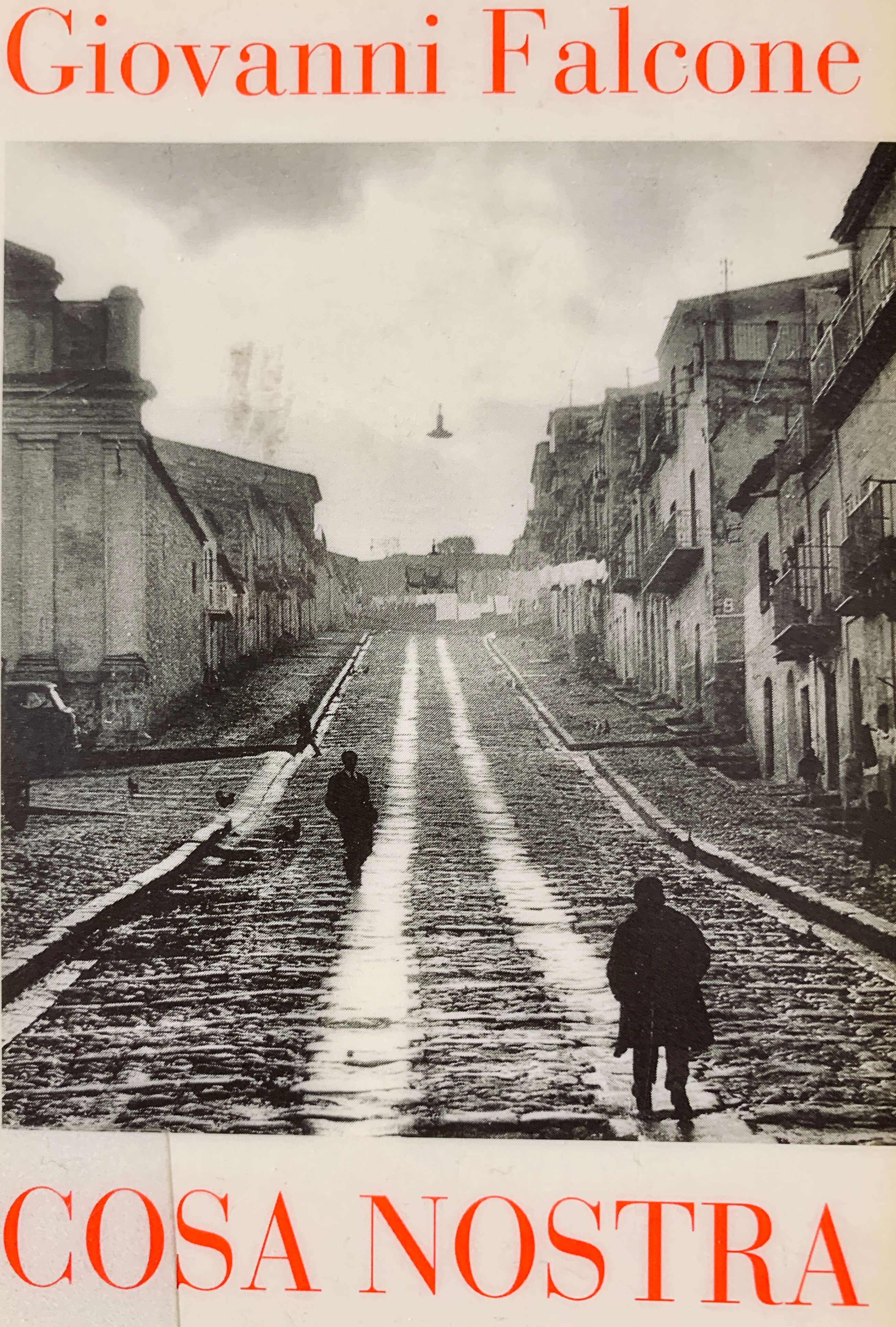- Home
- History of Sicily
- History of the Mafia
- Luciano Leggio
luciano leggio and the rise of corleone's mafia
A Man from Corleone
An informer described Luciano Leggio: "His gaze inspired fear even in us Mafiosos. He could get nervous at the slightest thing, and then there would be a strange flash in his eyes that would silence everyone present. At that moment, you could sense death floating in the air."
Often, it was more than just a feeling. On one occasion, Leggio, in a fit of temper, killed another Mafioso and his mistress, then raped and killed the man's 15-year-old daughter.
Throughout his life, Leggio was plagued by chronic illnesses. He suffered from prostate problems and a progressive degenerative disease of the vertebrae. The latter caused an inflammation of the spine, for which he had to wear a leather corset.
Despite his illnesses and constant hiding, Luciano Leggio managed to work his way to the top of the Cosa Nostra.
Leggio's rise came at a time when the government and public opinion were beginning to get to grips with the Mafia problem in Sicily. At the same time, drug trafficking was creating new tensions in the traditional structure of Mafia families.
What follows is a dive into Leggio's career as a mafioso. It is also a story of the rise of the Corleonesi Mafia clan to the leadership of the Sicilian Mafia - a tale of greed and destruction.
Luciano Leggio's Star on the Rise
Luciano Leggio was born into poverty in Corleone in 1925. He joined the Mafia after the Allied Invasion of Sicily in 1943.
In post-war Corleone, typhus was a much bigger problem than Mafia crime. The townspeople lived in extreme poverty. The streets and sewage system were still in ruins from American tanks.
In the aftermath of the war, Cosa Nostra began to emerge from the hiding places where the Mussolini's regime had driven it. Still, the post-war period was relatively peaceful in Corleone. The average number of murders was ten in a year.
Luciano Leggio was recruited into the Mafia by Corleone clan boss Michele Navarra. Navarra was a doctor by profession. He was a general practitioner in the town until there opened a place for a director of a hospital. The post became vacant when the previous director was conveniently killed.
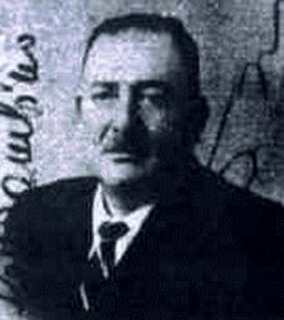 Michele Navarra belonged to the old guard of Sicilian Mafiosi. In those times, Mafia bosses were a kind of people's men. They held court openly in piazzas and killed more sparingly than the next generation.
Michele Navarra belonged to the old guard of Sicilian Mafiosi. In those times, Mafia bosses were a kind of people's men. They held court openly in piazzas and killed more sparingly than the next generation.Leggio received his first award for his loyal service to the Mafia in his early twenties. At that time, he was assigned to guard a nearby farm.
Guarding farms was a traditional Mafia activity in those times. The guard's duties enabled the organization to promote other business activities, such as smuggling, theft, intimidation of workers, and extortion of protection money from landowners.
In 1948, Leggio was ordered to kill Placido Rizzoto, a local trade unionist and resistance veteran. In the Mafia's opinion, Rizzoto had gone too far in his arrogance. He had dared to demand that people other than the big landowners and Mafiosos should have the right to a decent life.
Leggio took Rizzoto at gunpoint outside the town, forced him to his knees, and then shot him three times in the head.
The men who assisted Leggio in the abduction revealed to police where the bodies would be found and who had shot Rizzotto. Despite this, Leggio was never convicted of the crime.
After Rizzotto's murder, Leggio disappeared for the first time. Since then, disappearances became his trademark. They gave him a chance to avoid the authorities while at the same time treating his many illnesses.
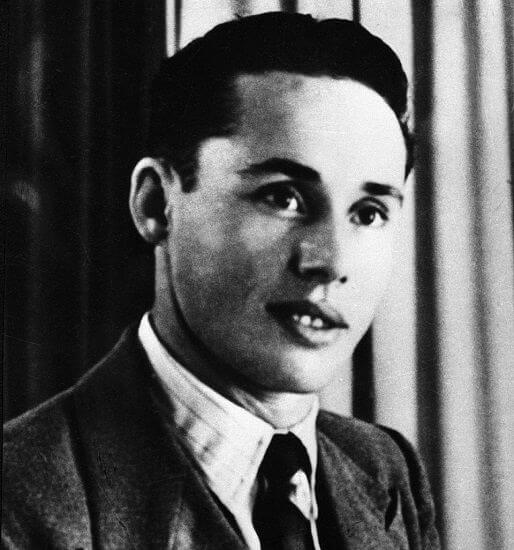 Luciano Leggio as a young Mafioso.
Luciano Leggio as a young Mafioso.The Old Guard Challenged: The Battle of "Tombstone"
Luciano Leggio's escapes weren't only about hiding and recovery. The business had to go on as usual. In 1956, while hiding, Leggio began to engage in livestock breeding. The purpose was to disguise his real business, cattle rustling.
At this time, Leggio began to challenge his former boss, Michele Navarra. First, he intimidated one of Navarra's men into giving up his share in the livestock business. Then, when one of Navarra's men bought land nearby, Leggio began to vandalize his property.
This sort of thing could not go unpunished.
In June '58, Navarra's soldiers trapped Leggio in his farm buildings. But they were too afraid of Leggio and didn't go near enough. They opened fire from too far away, and Leggio managed to fend off their attack.
Two months later, a car was found on the road leading to Corleone. Inside it lay Navarra and another doctor, their bodies riddled with bullet holes.
Leggio had been inspired by the Chicago gangster Al Capone. Instead of dealing with the murder discreetly - as was the custom - he fired a machine gun into the car, blasting it full of bullet holes.
Attacking Navarra was a bold act. He represented the old guard of the Mafia, meaning stability and power. He also had solid political support.
The dice had been cast. A battle between two Mafia divisions ensued. It was at this time that the town of Corleone was given its nickname: 'The Tombstone.'
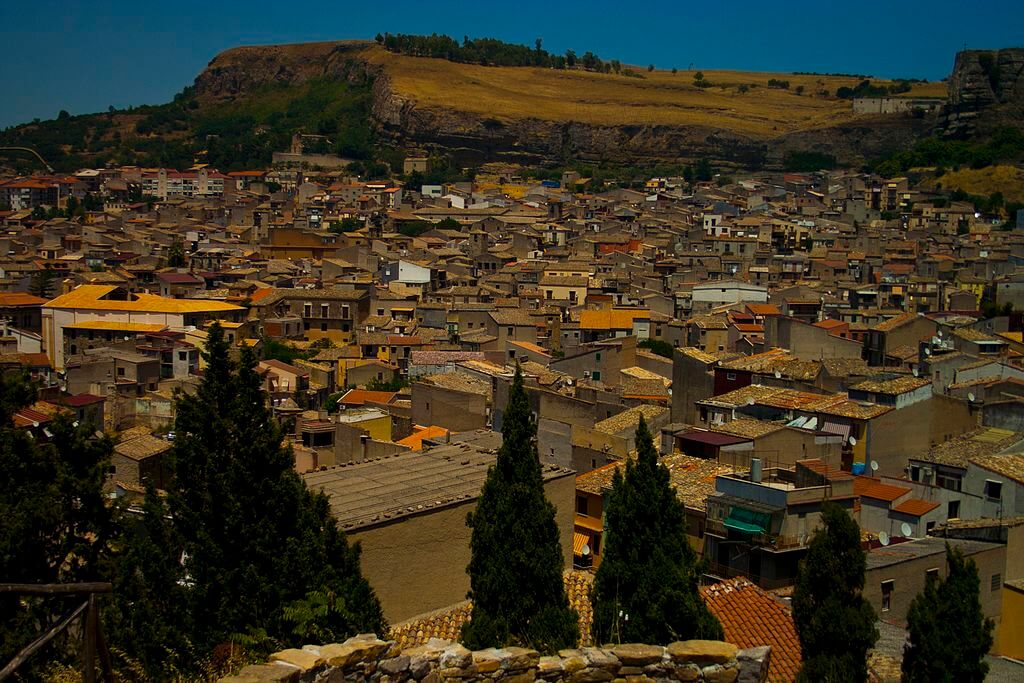 Corleone by nightfall. (Photo: milos milosevic / Wikimedia Commons)
Corleone by nightfall. (Photo: milos milosevic / Wikimedia Commons)In the end, it was Luciano Leggio who emerged victorious amidst the corpses. At the same time, he became the pioneer of the later Corleonean way of seeking power.
Force was more important than diplomacy. Political power was subordinated to violence. In the short term, this might bring you unpopularity, but in the end, others are forced to bend, as the body count grows.
The feud between two warring Mafia factions continued for five years. The end came with the explosion of the Ciaculli car bomb on 30 June 1963. This attack, which killed several carabinieri, awakened both the public and the authorities.
The Ciaculli car bomb led to mass arrests. Eventually, Leggio himself was taken into custody in 1964. In the end, sixty-four men were taken to court in connection with the power struggles between Leggio and Navarra.
Witnesses were intimidated, the judge had an 'unconscious tendency' to be overly critical of the material presented by the prosecution. Evidence disappeared behind locked doors or mysteriously turned into other, less incriminating material.
After all was said and done, all sixty-four men were acquitted.
At this point, Leggio had worked as a Mafia hitman for almost a quarter of a century. Yet he had only one criminal record: stealing grain sheaves.
However, the prosecution appealed the verdict, and - miracle of miracles - Leggio was sentenced to life imprisonment. By the time the sentence came into force, he had once again disappeared.
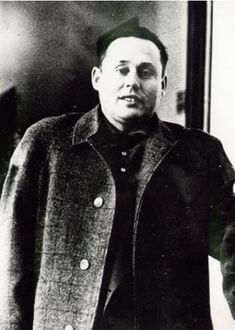 After Navarra's murder, Leggio was the official Mafia boss of Corleone.
After Navarra's murder, Leggio was the official Mafia boss of Corleone.The Beasts Take Over
Since the 1950s, the Sicilian Mafia had been governed by a supreme commission, "La Cupola." Its members were supposed to be independent of the local mafias. This way, they could better mediate disputes.
Now, the practice was changed. The Cupola was reconstituted, and its members were elected from Sicily's most powerful Mafia bosses.
Luciano Leggio became a member of the Cupola. He was joined in the leadership by Palermo mafia bosses Gaetano Badalamenti and Stefano Bontato. The new commission began to operate in 1974.
Leggio was unable to attend the meetings in person. He was once again on the run from the authorities. Instead of him, Leggio sent his long-time apprentice Salvatore "Totó" Riina.
Riina was regarded as a somewhat simple, if brutal, man. In his oversized suit, he looked like a peasant cousin who had wandered into the city. He didn't talk too much. But his actions spoke louder than any words ever could.
Totó Riina's right-hand man was Bernardo "Tractor" Provenzano. The name came because Provenzano left his opponents like they were run over by a tractor. All that was left was a pile of corpses. Provenzano and Riina were also known as "The Beasts." Both were guilty of several dozen murders.
Under Leggio's leadership, the Corleoneans had managed to get to the table with the biggest names in Cosa Nostra. But to the Palermo's bosses, they were still seen as peasants who were laughed at behind their backs.
The arrival of the Corleoneans to Palermo split Cosa Nostra into two camps. One was led by Leggio, the other by 'Tano' Badalamenti.
This was the situation at the end of the 1970s. At this point, the multi-millionaire Leggio had already been in prison for a few years. But this in no way affected his activities as head of his clan.
In a way, running the clan from prison was even better. The guards and other prisoners acted as his servants. Within the prison walls, he was also well protected from enemies.
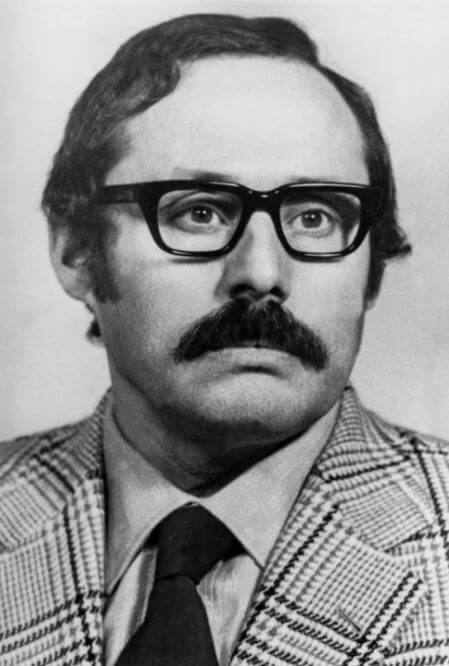 Leggio in disguise. The police eventually found him in Milan, presenting as a professor. They arrested him in his penthouse. After that, Leggio never walked free again.
Leggio in disguise. The police eventually found him in Milan, presenting as a professor. They arrested him in his penthouse. After that, Leggio never walked free again.Preparing for War
The Corleoneans worked behind the backs of the other Commission members. They recruited allies and infiltrated them into the Mafia families of their opponents. They also assembled a secret army by initiating members into the Mafia without the knowledge of the other bosses.
In addition to creating alliances, the means of increasing power were assassinations. Corleoneans killed Mafia members without asking permission from other leaders. This was strictly forbidden and should've been punished by death.
But it wasn't. For one reason or another, Palermo's Mafia bosses looked the other way. Riina played the fool and denied knowing anything about any of it.
There is some doubt as to whether the leadership of the entire Corleone family passed from Leggio to Riina at this point. Some say that Leggio remained in charge throughout. However, this was never proven in court.
Either way, the murders of high-ranking Mafia members throughout Sicily continued. Little by little, the leading mafia families of Palermo lost their allies - without them even noticing it. At least not before it was too late.
At this point, the international heroin trade had spread the power of the Sicilian Cosa Nostra across the Atlantic, from Canada to South America.
The stakes were high. There was BIG money in play. At the head of this business were the Palermo bosses, Bontate, Inzerillo, and Badalamenti. Because of their global connections, they considered themselves invincible.
The Corleoneans were left outside the main currents of the transatlantic drug trade. Instead, they were focusing on increasing their power in Sicily.
Slowly, they started to control the Mafia's decision-making, the enforcement machinery, and - most importantly - the military apparatus.
In this way, little by little, they carried out a kind of military coup while the eyes of the other bosses were focused on the other side of the ocean.
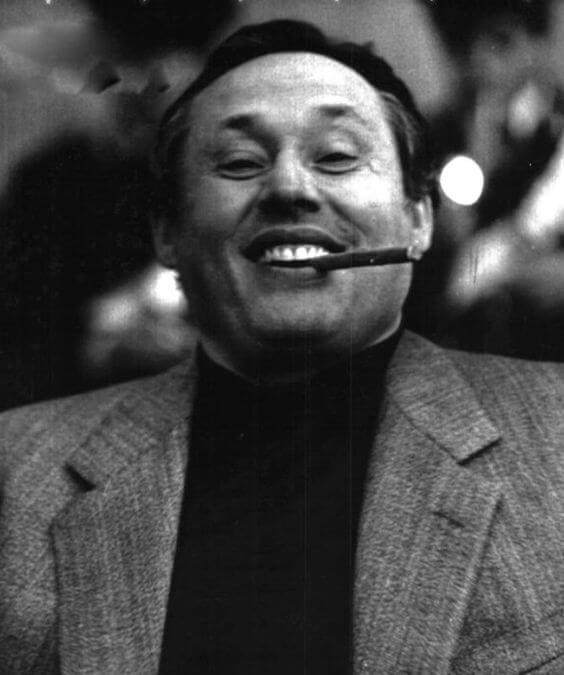 Leggio playing the gangster. He didn't enjoy smoking cigars but liked to be portrayed with them - like his hero Al Capone.
Leggio playing the gangster. He didn't enjoy smoking cigars but liked to be portrayed with them - like his hero Al Capone.The Purge - Also Known as The Second Mafia War
The Second Mafia War broke out on 23 April 1981. That was the date one of the big bosses, Stefano Bontate, was murdered. He was returning from his birthday party in a brand new Alfa Romeo. In Corleonean style, he was shot at a traffic light with a submachine gun until the body was beyond recognition.
Two and a half weeks later, the same fate befell Salvatore Inzerillo. The other big names, Tommaso Buscetta and Tano Badalementi, were gone from Sicily. Buscetta - 'the boss of two continents' - had returned to Brazil after his release from prison. Badalamenti lived in the United States.
The murders of Bontate and Inzerillo were unprecedented in the history of Cosa Nostra. To the amazement of observers, there was no retaliation.
It was as if Luciano Leggio's opponents stood still like rabbits in headlights while his men took them out one after another.
In the following months, 200 men belonging to the Bontate and Inzerillo families were killed in the province of Palermo. And that was just the found bodies. Many others disappeared without a trace, soaked in barrels of acid.
Soon the Corleoneans weren't killing only the enemies. They were also killing their enemies' friends, relatives, and business associates - even women and children - not caring if they had anything to do with the Mafia or not.
And when enemies and their relatives went in short supply, Riina started to kill his own allies. The mere suspicion of independent thinking was enough to get one the death penalty.
If the Cosa Nostra had hitherto pretended to follow a code of honor, it was now all gone. After everything else had gone, out went the last rule that had held the Mafia together until then: Omertá, the code of silence.
With no end in sight to the killings, more and more mafiosos began to give up their information to the state.
The Tide Turns Against the Mafia
Murders had become an almost daily occurrence in Palermo. Bodies were left in front of the police station or burnt in huge barbecues in the middle of the city streets.
The number of so-called 'valuable corpses' was also on the increase. Judge Terranova was shot in the middle of the street. Palermo's chief prosecutor was shot in the city center, near the Teatro Massimo opera house. Other victims included security guards, drivers, family members, friends and passers-by.
All this began to affect the minds of Sicilians. Anti-mafia demonstrations were organized, and even the Cardinal of Sicily was preaching against the Mafia.
At the same time, growing numbers of testimonies from within the Mafia helped prosecutors Paolo Borselino and Giovanni Falcone to gather evidence for the largest Mafia trial in history.
The work of the prosecutors culminated in a so-called "maxi trial." The 474 defendants included Leggio's "Beasts," Totò Riina, and "Tractor" Provenzano. Luciano Leggio himself was among the accused.
The verdict was delivered on 16 December 1987. 114 of the 474 defendants were acquitted. Those found guilty were sentenced to a total of 2,665 years of imprisonment.
Luciano Leggio was acquitted due to insufficient evidence. It was not possible to prove that he had continued to give orders from behind bars.
Riina went on the run. He was finally captured in January '93. At that time, he was also wanted for the murders of the prosecutors Giovanni Falcone and Paolo Borselino.
The day after Riina was caught, Luciano Leggio died of a heart attack in a Sardinian prison.
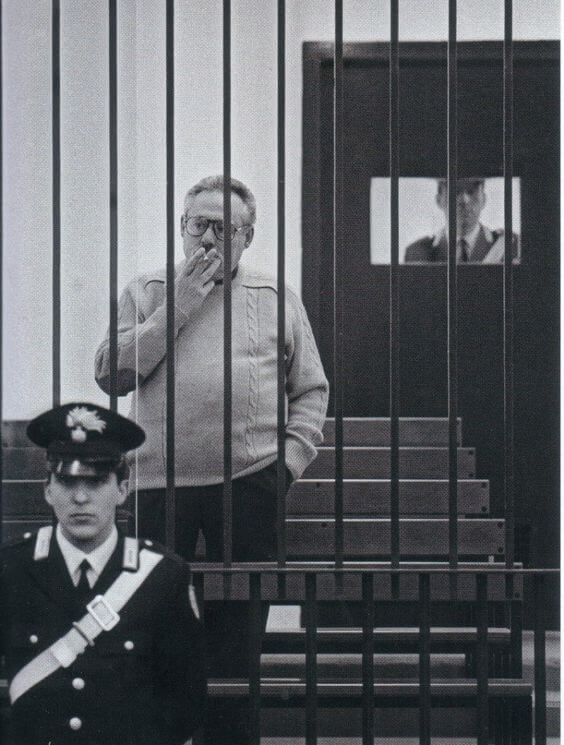 Luciano Leggio in the Maxi Trial.
Luciano Leggio in the Maxi Trial.Conclusion
Luciano Leggio was a significant figure in the history of Cosa Nostra. He paved his way to the top through a ruthless use of violence.
In Leggio's footsteps came another Corleonean, Salvatore "Totó" Riina. Small in stature but cruel in mind, Riina took on the dirty work of the Corleoneans with zeal.
Eventually, this led to the Second Mafia War in the early 1980s. The brutal killings went on for years. Riina had no respect for the old Mafia codes. This made many Mafiosi turn into state witnesses.
It culminated in the so-called 'maxi-trial.' It was a show of force by the prosecutors Paolo Borselino and Giovanni Falcone. Both were killed soon after.
After Leggio and Riina were captured, the Mafia changed its ways and has operated more discreetly ever since. The Corleoneans remain a powerful force in the Sicilian Mafia today.
(This page last edited: February 18, 2025)
Recent Articles
-
Where to Stay in Sicily: Top Areas for Every Traveler
Nov 27, 25 08:14 AM
Where to stay in Sicily: A guide to the island’s best regions, helping you choose the perfect base for your trip. -
Cefalu Beaches: Where Sun, Sand, and Calm Await
Nov 26, 25 12:10 PM
Discover Cefalu beaches where warm sands, clear waters, and coastal charm come together. -
Selinunte Park - History by the Sea
Nov 14, 25 05:02 AM
Selinunte park, its rise to glory, destruction, and how to visit it.
Follow MANY FACES OF SICILY on Facebook, Instagram, Bluesky & Tumblr
Contact: vesa@manyfacesofsicily.com
